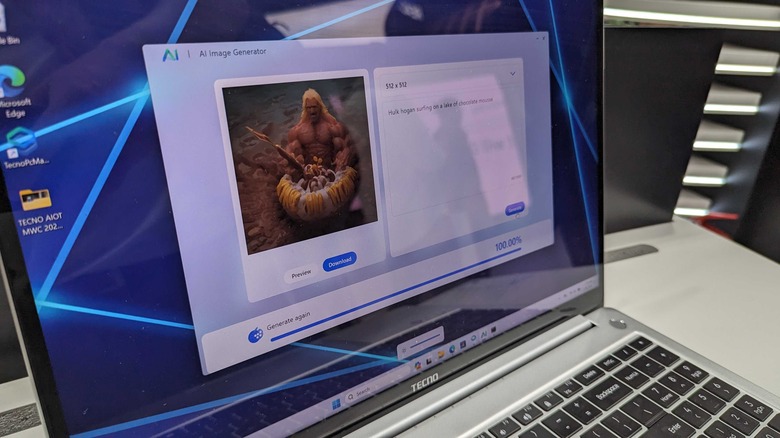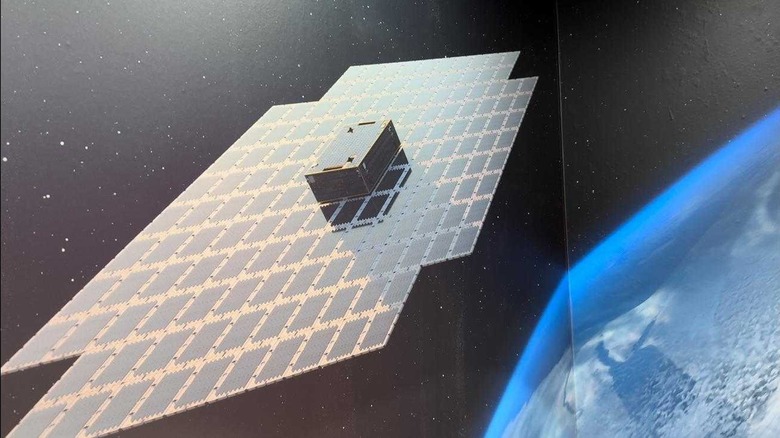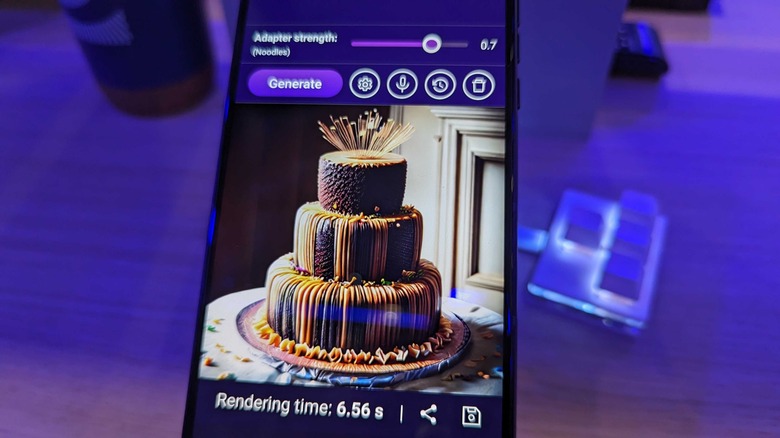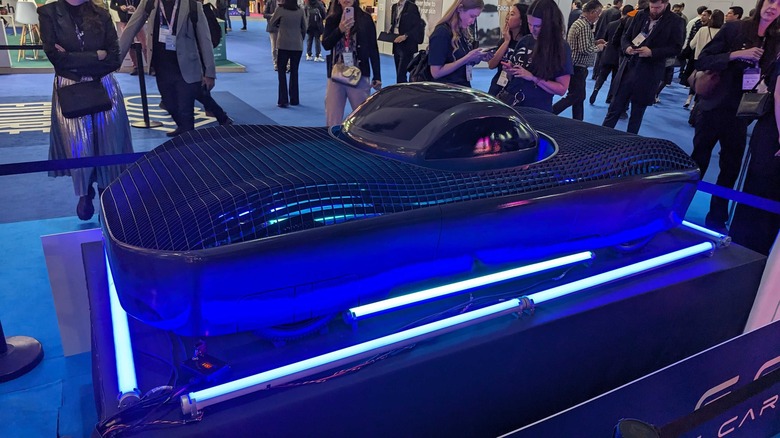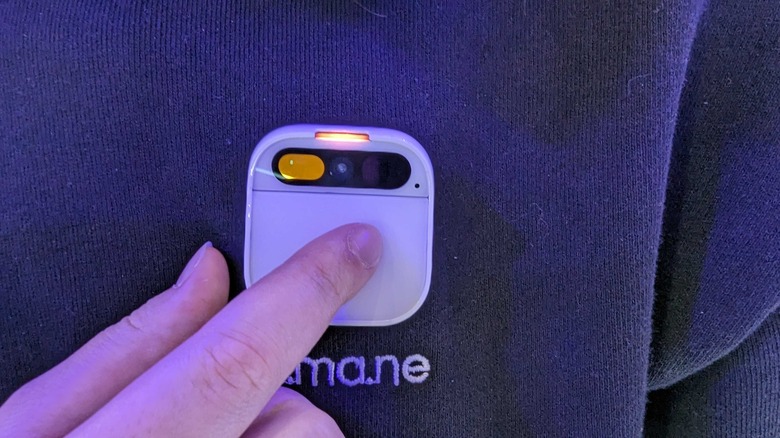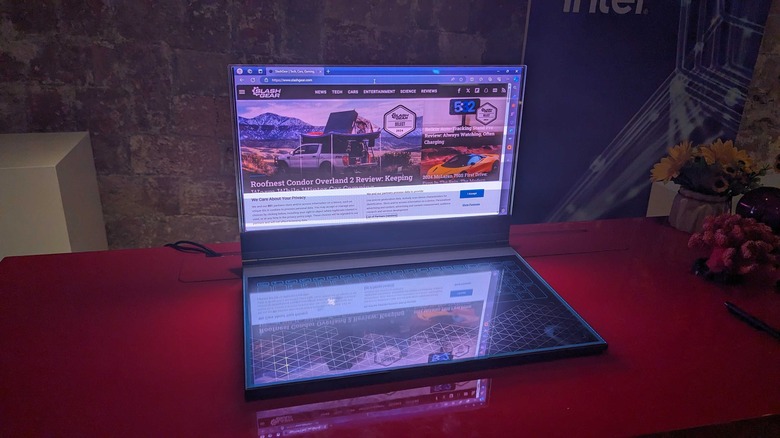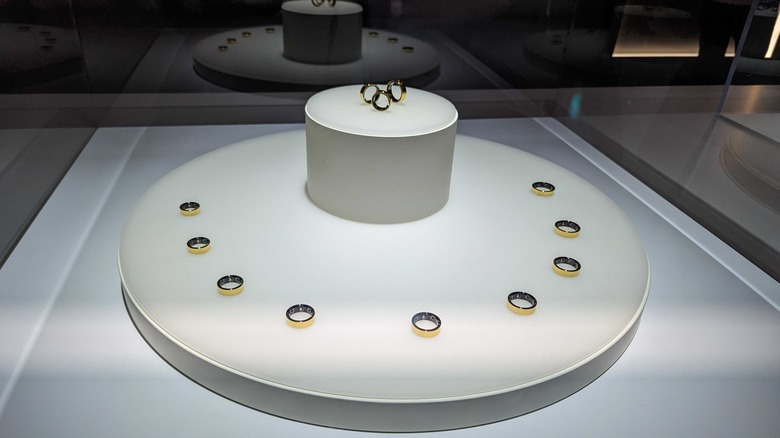The Best Tech To Keep An Eye On Following MWC 2024
Trade shows like MWC serve a few purposes. Companies are introduced to each other's products and may establish business relationships based on what they see at such shows. Members of the press, when not stuffing their collective faces with free tapas, tend to walk the floor looking for interesting things to write about. Some companies decide to use the platform to give everyone a glimpse of their future plans.
So after spending four days wandering around the show floor, putting in the steps, and burning off said free tapas, anyone covering the event should have a fair idea of the way things are going in the tech world. Or at least where the major businesses involved think things are going, and will be investing vast amounts of money and effort.
Some of it is obvious. You'd have to be living under a rock, on the moon, with a hood over your head and Phil Collins irrelevantly wailing away in the background, to not notice the number of tech companies going all in on AI. Some things are a little more subtle, like promises of better cell coverage. Then there's the downright wacky, long-shot stuff, like a car that turns into a personal light aircraft once you hit gridlock. Here are four of our biggest takeaways from MWC 2024.
Better connections in the most remote of places
Improving both cellular and 5G connectivity was high on the agenda for many companies at MWC 2024. From signal repeaters that can improve coverage in urban areas, to satellite launches aimed at giving you five bars in the middle of nowhere, there was no shortage of ideas on hand.
AT&T and Nokia are both looking to drones as a way to maintain connectivity in areas suffering from an outage. The principle is simple: the drone goes up and provides a signal to a vast area underneath it. AT&T's drone is connected to a cable, which is actually more liberating than restrictive. The cable contains a power wire, so the cell company's drone can stay airborne for as long as it needs to.
AST SpaceMobile is also partnering with AT&T to launch a series of large satellites into orbit. The goal is to provide better connectivity in rural areas, particularly places that don't have many cell towers, or where running cables is massively impractical. The satellites are set to launch in the first half of 2024. The Texas-based company has partnered with AT&T in the past, as both companies made history by staging the first direct-to-cellphone call from space. Which is handy, as easy communication with space is becoming increasingly important these days.
On device AI, lots of it
It's plainly obvious that many companies see on-device AI as the next big thing. During MWC, we've seen AI-centric chips from the likes of Dell, and built-in image generators from MediaTek and Tecno; there were even a few text-generating models for the ChatGPT fans out there, including one from Qualcomm. All of the programs in question certainly have an early days "not quite there yet" feel, and they're nowhere nearly as powerful as the token-based models that are backed by warehouses full of hardware. However it's definitely something you'll see on a lot of devices going forward.
Samsung and Honor also used MWC to showcase their AI suites. Honor's Magic Portal stood out, and could streamline how you use your phone. Samsung's suite of tools can also be seen as a clear statement of intent; the South Korean company is intent on using AI to bring its devices to the next level and change the way you use your smartphone.
It's easy to see how on-device AI could make a major impact on every device we use. Behind the scenes, it can make those devices run optimally and get the most out of the hardware. On the front-end, it could make every single action you perform with your phone better. Pictures will be in perfect focus and look better than ever, conversations will be automatically translated if both participants speak different languages, and just highlighting a few words or a photo could immediately bring up an app or function you want to use.
Overall, it's not outlandish to say that AI implementation could cause a gap between next-generation devices and current smartphones that is similar to the gulf between a modern smartphone and a late '90s cell phone.
Alef's flying car
One of the more notable exhibits at MWC involved a flying car — or a scaled down model of one anyway. A company called Alef has designed it, and it operates a bit like a drone, with several built-in propellers giving it lift. The "cockpit," or whatever the driver/pilot sits in, is capable of staying steady as the VTOL vehicle rises and rotates into a position that allows it to fly forwards.
While being a good idea in theory, there's a good chance Alef's flying car will never get off the ground. The company's CEO claims that the vehicle will go into production in 2025, but promises have been made about similar "Jetsons"-esque cars before.
There's also a few legal considerations that may hold the flying vehicle back. As things stand, in the U.S. at least, you'll need a driver's license to drive around in it, and a pilot's license to take to the skies. This is a pretty large barrier to entry, as not everyone has a pilot's license, and acquiring one is both difficult and expensive — perhaps even for those with flying car fun money.
Alef believes these laws could change within a few years of the vehicle's launch, and certain categories of light aircraft can be operated without a pilot's license which may help, too. However, without a significant shift in laws, or a big redesign, this could just wind up being a de-facto EV in most people's hands.
There's a new AI-powered wearable device
One of the devices to cause a buzz at MWC this year was Humane's AI Pin: A smartwatch-sized, projector-packing box you can clip to your chest. It can give directions, play music, answer questions, and perform many other potentially useful tasks. It hasn't quite impressed everyone.
Humane's pin has caused a bit of a stir, with many people questioning whether a world with smartwatches and smartphones needs another smart device — one you'll have to keep charged and connect to your body before you leave the house. There are certainly practical applications, though it's hard to judge how useful those applications are without using the pin for an extended period.
Its cost — $700 for the device itself, and a $25 monthly subscription to cover things like data usage and tokens for its AI usage — is more than some would be willing to pay. Especially for technology that supplements, rather than replaces, a standard smartphone. One thing that you can't knock is the device's implementation of AI, which from what we've seen, is very well polished.
The Humane AI Pin is set to be released later in 2024, and for better or worse, is nailed on to be one of the most talked about devices of the year.
Bendy phones and clear laptops
Lenovo's laptop isn't technically an MWC-debutant, with the tech having first been spotted at a Lenovo event in 2023. However, the strange device still grabbed plenty of attention as it sat in a display case near the edge of LG's booth. The focus shouldn't be on the device itself, which looks a bit weird, but is ultimately useless to people who've never dreamed of using their smartphone as a bracelet. But the potential tech behind it may be worth keeping an eye on.
Flexible screens, again, aren't new. LG has had a flexible TV for a while, and Samsung has a flat screen that can roll right up like a poster. But it's a similar tech that makes Motorola's concept device work — and there are plenty of real world applications for screens with a little flex. That could include tablet-sized devices that could be tightly rolled up and shoved into something the size of a cigar tube, along with increased component durability when it comes to things like folding phones.
Lenovo's clear laptop is another wacky concept that you need to look beyond if you really want to see how it will shake up the tech world. Some of its components, like the clear but highly reactive sheet that's core to its keyboard's function, are likely to crop up on everything from touchscreens in stores to the dashboards of luxury cars.
Clear devices in general may also be on the horizon. A couple of clear TVs were one of the main talking points of CES, now you have a transparent laptop grabbing headlines at MWC. They may all seem silly and gimmicky at first, but it could be a way into AR for people who are averse to glasses.
Samsung's new smart ring
Samsung's major unveiling at MWC centered around its smart ring. The rings, which were displayed in a glass case and not to be touched by us mere mortals, appear to be incredibly compact — closer to something like a beefy wedding ring than a clunky piece of wearable tech. So we can confirm the profile is spot on, and the comfort factor is likely increased as a result.
As with many smart rings, its core functions will involve health monitoring and activity tracking. It will also be available in nine sizes and three colors, so there's a good chance of you finding the perfect fit and look. If you have access to a Galaxy S24, you can also use the MyVitality system to keep track of everything.
As mentioned, the ring was behind glass, so we couldn't go hands-on with it. However, we will take an in-depth look when we can, and provide more details as they emerge. Of all the individual products at MWC, Samsung's new wearable definitely ticks all the boxes when it comes to something you want to keep an eye on.
